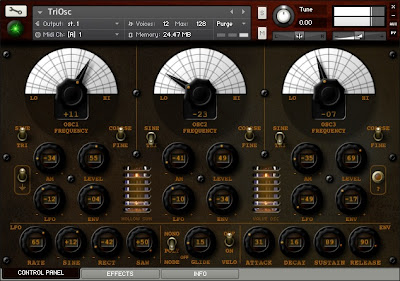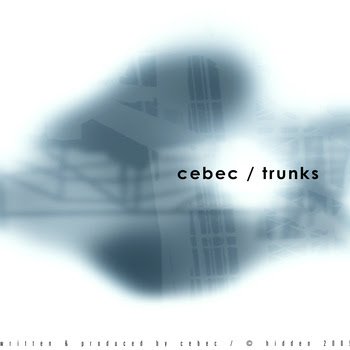 "Adding to the Music Laboratory Machines series, TriOsc is styled on equipment retrieved from an ancient, disused rocket launch control centre and features three oscillators with samples of valve sine and triangle waveforms taken from a rack of vintage test equipment to create dense clusters of retro sci-fi electronica.
"Adding to the Music Laboratory Machines series, TriOsc is styled on equipment retrieved from an ancient, disused rocket launch control centre and features three oscillators with samples of valve sine and triangle waveforms taken from a rack of vintage test equipment to create dense clusters of retro sci-fi electronica.Unique to TriOsc is the 'SERENDIPITY' button (labeled '?'). You see, TriOsc has a mind and being of its own. Clicking this button generates new patches and sounds randomly created by TriOsc that instantly evoke the spirit and electronic tonalities of the early Radiophonic Workshop, 'Forbidden Planet' and other classic sci-fi movies, Morton Subotnick, Tristram Cary and other early electronic music pioneers working with primitive equipment - an astonishing source of inspiration which can lead you down different roads of musical ideas and exploration. The randomly generated sounds can then be tweaked and shaped to your own particular needs using the comprehensive panel. They can even be saved as normal NKIs for future use.
ROUGH AND READY DEMO
The quick audio demo above is not from the Krell's music library archive but was recorded in one take, no overdubs or trickery, just clicking on the SERENDIPITY button.
Available at the end of this week.
Price - $TBA" via KVR http://hollowsun.com/
This one in via Atomic Shadow who had the following to say: "I just spent the evening with an advanced copy and it is brilliant. This one is called TriOsc. As you might expect it uses three oscillators (sampled from my vintage test equipment). It has a good effects section and the oscillators can be modulated in various ways.
Here is a link to the demo I recorded earlier. It's called Misson To Kolchab. 100% TriOsc"
And a little on Steve Hollow: "He was the main sound designer at Akai since the S950. If you do a bit of Googling you can find his name on the credits to The Last Temptation of Christ soundtrack. Oh yes, he did sound design for Peter Gabriel."
















































